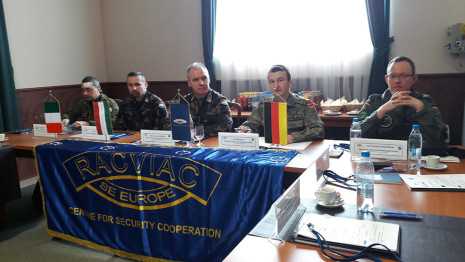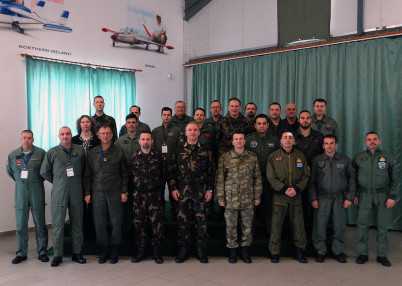Open Skies Course Starts in Hungary
Szöveg: honvedelem.hu | 2018. március 23. 10:43The “Open Skies Treaty Areal Observation Course”, co-organized by the Centre for Security Cooperation (RACVIAC) and the Hungarian Ministry of Defence, started in Hungary on 20 March 2018.
The nine-day event – which is being attended by 11 foreign and four Hungarian students consists of a theoretical part and a practical part, which is an Aerial Observation Mission to be carried out with a Hungarian Open Skies aircraft. Besides Hungary, the course has gathered participants from Bosnia-Herzegovina, Croatia, Slovenia, Serbia, Italy, Greece, Turkey and Kosovo, and is supported by the provision of specialists and experts from Germany and Italy. The full-scale support of the program is provided by the MoD Defence Policy Department, the MoD Zrínyi Mapping and Communications Servicing Non-Profit Ltd, the HDF 59th Dezső Szentgyörgyi Air Base, the HDF vitéz Sándor Szurmay Budapest Garrison Brigade and the HDF Aircraft Repair Plant.

At the opening ceremony of the event, Maj.-Gen. László Domján, Head of the MoD Defence Policy Department emphasized that although the conflicts in some countries leave their mark on the implementation of the Open Skies Treaty, it continues to be an important instrument that is able to provide greater openness and transparency and to enhance confidence- and security-building measures, which significantly contributes to a safer Europe. The general underlined that the experienced Hungarian lecturers provide a good opportunity to learn the basics in the theoretical and the practical parts of the course, so he requested all participants to receive their lectures in this spirit. He also deemed it important to say that beyond the learning objectives, the course also creates excellent opportunities to get to know each other and strengthen personal relations.
During the course the representatives of participating countries are provided with a comprehensive and detailed overview of the Open Skies Treaty, including its structure, content and current events. Moreover, the Aerial Observation Mission provides them with a unique opportunity to learn about the operation of an observation aircraft in realistic conditions. They can also follow the production process of the “end product", that is, the aerial photograph from the initial steps of planning to the development of the photo.
The Hungarian observation aircraft is the An-26 transport plane of the Hungarian Defence Forces, which has been equipped with a Leica RC-30 analogue aerial film camera system for Open Skies and aerial photography missions. Since 2002, this system has continuously been operating in service of these tasks. Hungary has been a co-organizer of such courses in support of RACVIAC since 2002, too.

The Open Skies Treaty was signed in 1992. Altogether 34 countries have joined it to the present day, thereby creating a regime of confidence- and security-building measures that cover almost the entire northern hemisphere. The observation flights conducted under the treaty help the development of military-to-military relations and the establishment of openness and transparency among countries. Since their start in 2002, the number of observation flights conducted to date has been around 1500. The geographical area they cover extends from Vancouver to Vladivostok, which is unique in the current system of arms control and confidence- and security-building measures. The continuously developing Open Skies Treaty regime uses its own array of means to respond to international security challenges, and, through the upgrade of technical equipment involved in the tasks and the use of modern digital cameras, it keeps up the work that started with the technology of the 1990s.
Photo: MoD Defence Policy Department